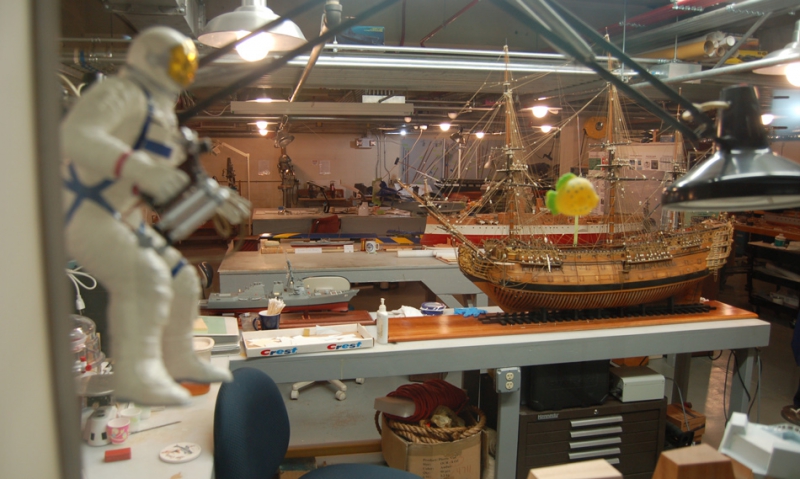
Naval history in intricate detail
For visitors to the 97th American Legion National Convention in Baltimore this summer, about 35 miles south in Annapolis, Md., is the U.S. Naval Academy Museum that offers a comprehensive, chronological voyage of Navy history – from the Barbary pirates to astronaut training. Complete with multi-media graphics and videos, it is a state-of-the-art, high-tech, interactive visual feast of information about American sea power.
Then, on the second floor of the museum inside Preble Hall – named for early American Commodore Edward Preble, who fought and led sailors from the Revolution through the War of 1812 – a different sort of display can be found, one that has no requirement of electricity but is even more compelling than the first-floor displays.
The Rogers Ship Model Collection is “the second largest collection of these kinds of models in the world,” says Maj. Grant Walker, an education specialist at the museum and a leading world authority on dockyard ship models. Many of the models at the museum date back to the 17th century and were purchased by Col. Henry Huttleston Rogers and were later donated to the Naval Academy. The donation necessitated the construction of the museum at Preble Hall.
More than 100 of the intricate, hand-carved models came from the Rogers collection, and several more were carved from bones by French prisoners of war held in England during the Anglo-French war period between 1756 and 1815.
Because the collection is so distinctive and unique, ship modelers and collectors visit frequently from around the world. The lowest level of the museum is largely a laboratory and workshop where model ships are restored and built, or rebuilt.
The museum also houses a vast collection of rare Navy art prints, flags, weapons and artifacts, including a portion of the USS Monitor and Oliver Hazard Perry’s famous flag from the Battle of Lake Erie – “Don’t Give Up the Ship.”
Admission is free at the museum, which is open Monday through Saturday from 9 a.m. until 5 p.m. and Sundays from 11 a.m. until 5 p.m.
To learn more, visit www.usna.edu/Museum or visit the museum on Facebook at www.facebook.com/usnamuseum.
